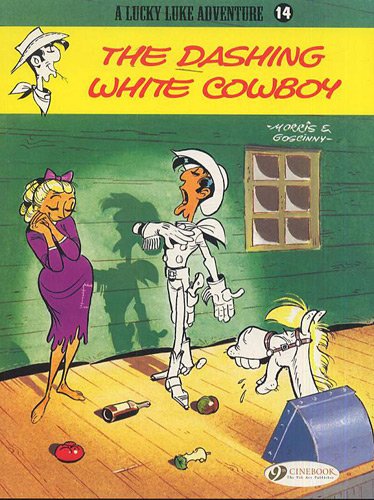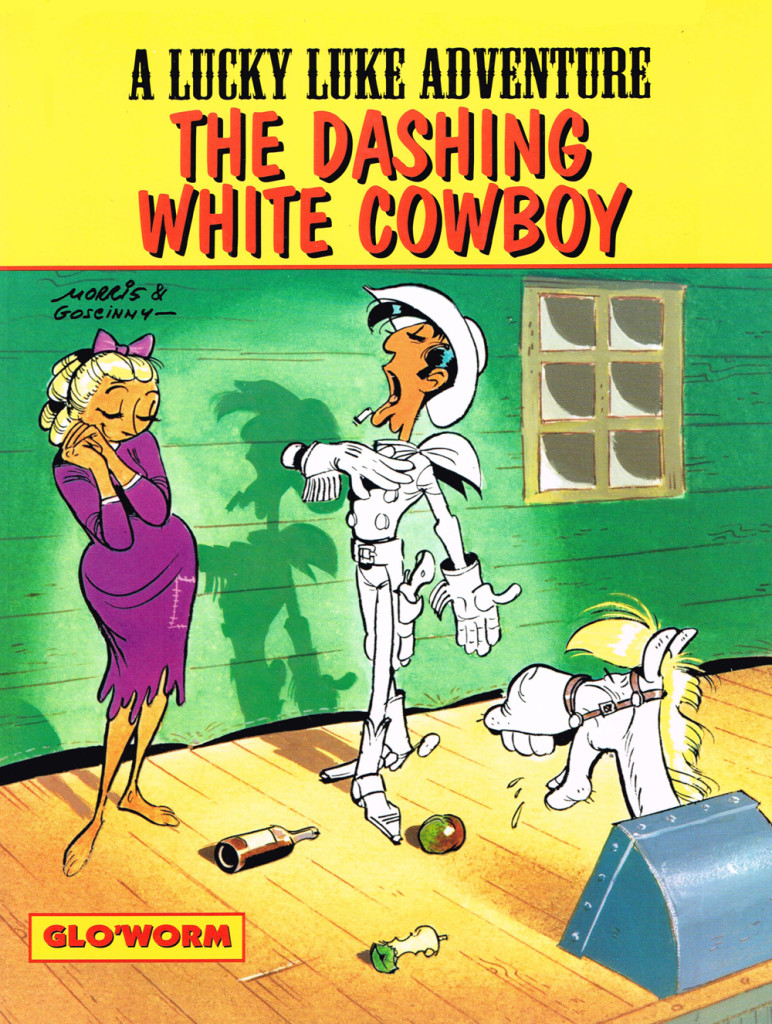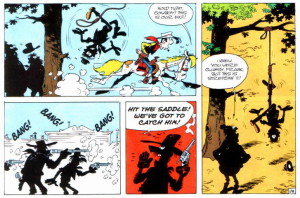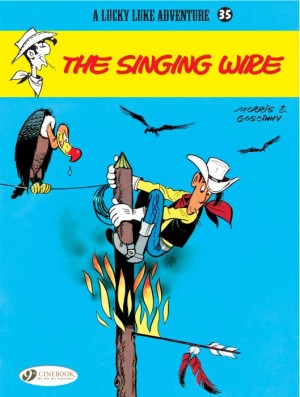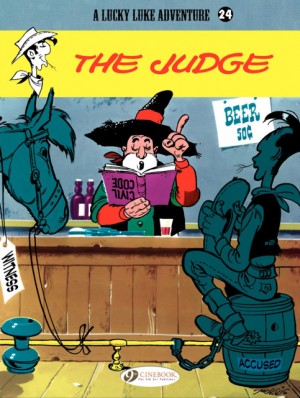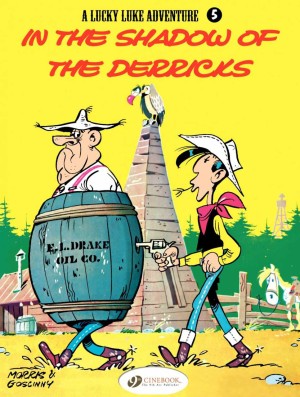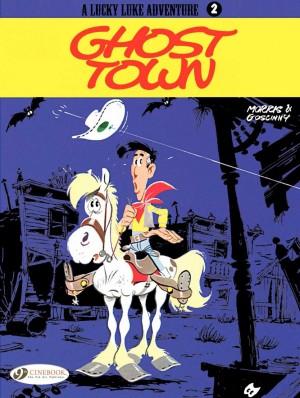Review by Roy Boyd
The Dashing White Cowboy, features a travelling troupe of actors who always seem to be putting on their play near where a robbery takes place (and always during the same part of their performance to boot). Lucky Luke soon becomes embroiled in their scheme, but his attempts to foil them go wonderfully awry, with the slippery actors often diverting blame to Luke himself.
Normally the most upstanding of characters, whose honesty is beyond reproach, here Luke instead spends most of the book trying to avoid being hanged (or ‘hung’ as many characters insist on saying: pictures are hung, people are hanged) or whitewashed and feathered. It’s not tarred and feathered because it’s a mining town where almost everyone is, amusingly, pitch black from head to foot. Luke attempts to use this to his advantage, but his plan backfires fairly spectacularly, leading to one of the many setbacks that he encounters during this tale.
As everyone knows, conflict breeds drama, and Lucky Luke (and his faithful, if sarcastic, steed, Jolly Jumper) are pitted against the world in a story that’s rife with invention and imagination, and works equally well as a mystery, adventure, or comedy. The artwork by Morris, always professional and slick, rises to the challenge set down by the story, with energetic and well-executed panels that show little sign of the shortcuts sometimes apparent in other adventures.
The penultimate panel features inevitable cameos, this time from the Dalton Brothers and Rin Tin Can, nemeses and sometime canine co-star respectively. The last panel features our hero riding off into the sunset singing, “I’m a poor lonesome cowboy and a long, long way from home”. Which is just how a book like this should (and almost always does) end.
Luke is a loner that’s more than a little akin to a cowboy version of Doctor Who, popping in to solve problems before going on his way, surrounded by friends (and recurring enemies), but ultimately alone, with just his horse (Tardis!) for company. Luke displays other Time Lord traits too, bouncing around all over the nineteenth century, from the 1830s to the 1880s, without aging a bit, something admittedly common to many comic characters.
This is one of the best books of the series, perhaps contributing to it being one of the few Lucky Luke books published in English prior to this Cinebook edition, via Glo’Worm. It’s also one of the few where writer René Goscinny reaches the heights that he much more frequently managed with Asterix adventures. Story and art complement each other beautifully in an adventure packed with humour, excitement and a genuinely baffling central mystery that causes our hero a lot more grief than usual. Which is delightful for the reader, if not the poor cowboy who, at least for most of this adventure, little deserves his ‘Lucky’ sobriquet.
